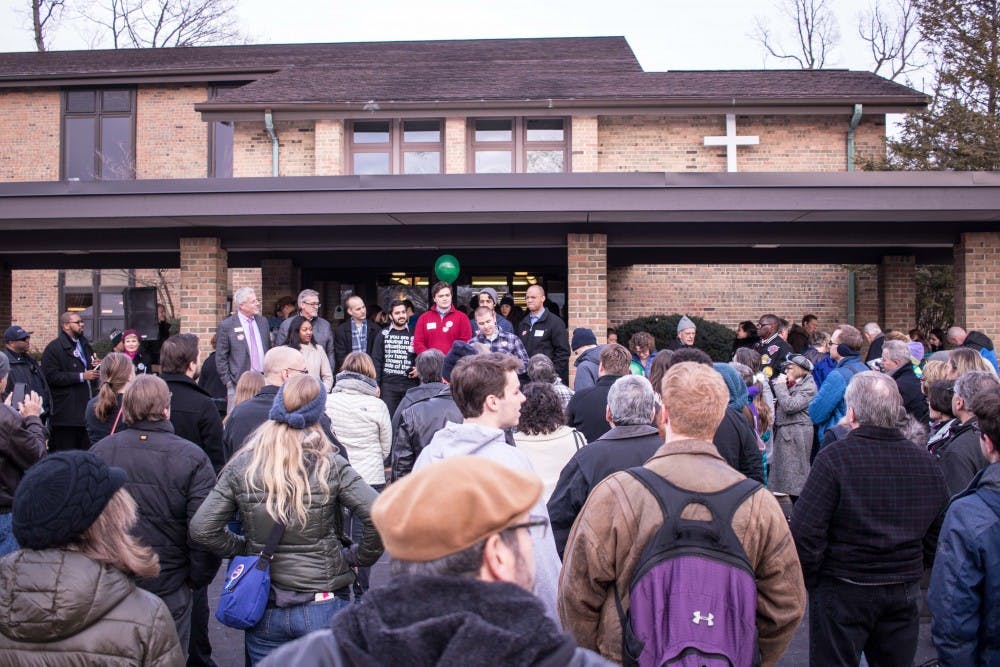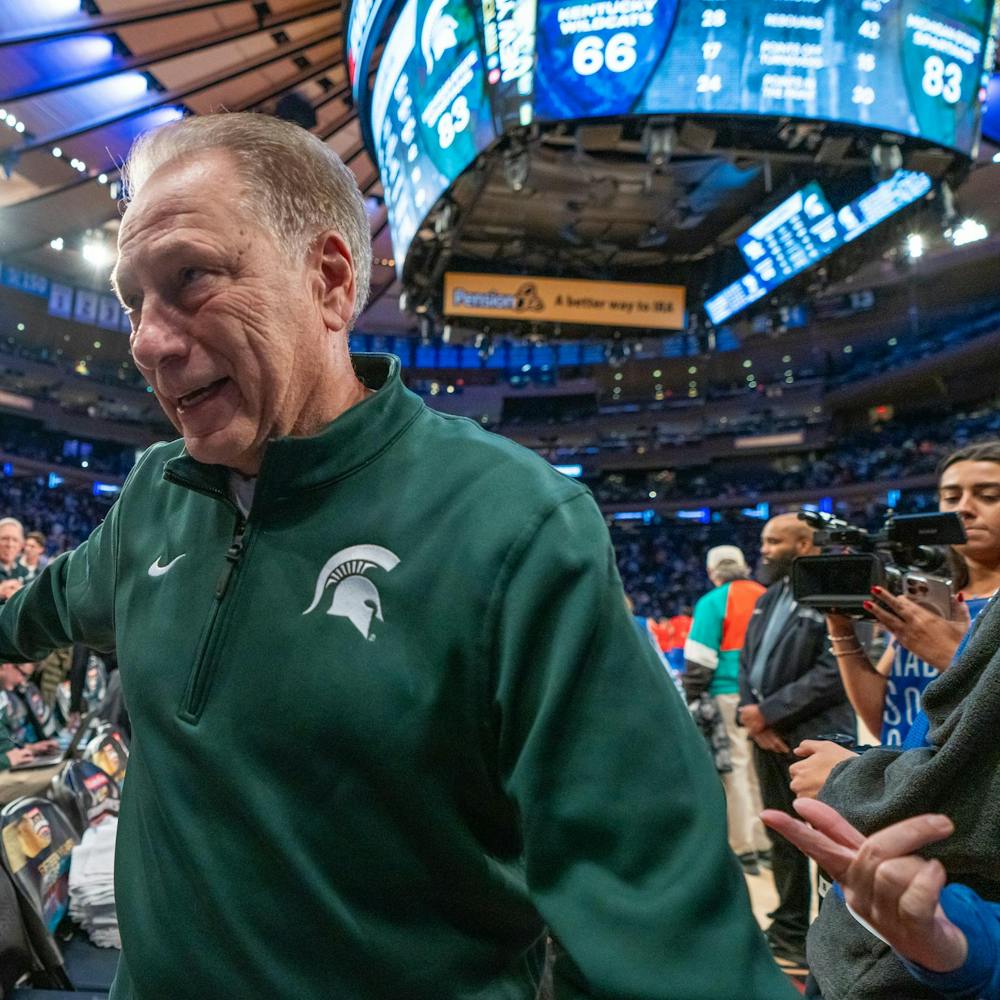He is Alex Hosey, a 15-year-old East Lansing High School freshman, point guard and activist. But more than anything, he's still growing up. The attention doesn't phase him too much, but his role as a poster child for youth activism in the Lansing area has begun to take over his personal life a little more than he'd like.
"I had a friend who had a birthday party — it was a sleepover, but I couldn't spend the night because I had to speak," Hosey said. "It just gets on my nerves that I can't be like a regular kid."
It's easy to forget, with his knack for public speaking and wealth of societal knowledge, that Hosey is barely old enough to remember a world without iPhones.
At Wednesday night's "Face to Face: A Conversation About Race" event at the Hannah Community Center, Hosey joined black professionals and two other high school students to talk about how their life experiences have been shaped by the color of their skin.
Panelists spoke to how many of society's issues with race were rooted in decades- and centuries-old issues like slavery and segregation, but the discussion focused more on present black experiences and how white East Lansing residents can work to make the city more accepting.
Panel facilitator Dorinda Carter Andrews noted the event was strictly a conversation about black-white race relations. She pushed Mayor Mark Meadows to hold these kinds of discussions more than once a year so that panels of all races could share their perspectives on how racism uniquely affects them.
"My point is not for us to get in like a racism Olympics, but if we're going to talk about racism, we have to understand that people of color experience it differently based on the history of race relations in this country," Andrews said. "If the city is going to continue healing, we have to talk beyond that black-white binary."
After opening remarks from Meadows, who recalled seeing the late Martin Luther King speak a few weeks before his death, Hosey read from his essay "Why I Sit." The piece details his reasons for sitting as the national anthem played before his games with the East Lansing High School freshman basketball team.
The essay had already pushed East Lansing City Council to pass an official apology for its past housing discrimination. Meadows even credited the essay with sparking the chain of events that led to the panel discussion.
While Hosey's refusal to stand for the national anthem earned him the admiration of many in the city, things weren't so rosy for another young man on the panel who did the exact same thing.
RoJe Williams is one of the "LCHS 4" who followed inactive NFL quarterback Colin Kaepernick's lead and knelt for the national anthem to protest police brutality at Lansing Catholic High School football games.
In response, the players, who all were starters on the team, were sent to the bench and threatened with expulsion from the parish if they continued kneeling, according to a WKAR report.
The response to Williams' act is a sign that people still can respond negatively to black actions without really understanding them, a theme addressed throughout the night.
Panelist Dr. Jasmine Lee, an East Lansing High School graduate, said as outright racist actions have largely become socially unacceptable, they've been replaced by an implicit bias against people of color.
Lee, who is now a MSU Neighborhood Student Success Collaborative Director, said racism nowadays tends to manifest itself in "sneaky, conniving ways."
"If I'm a white woman and I'm walking down the street, and if I see a black man I cross the street or clutch my purse or grab my keys because there's this innate fear, I might not even recognize that I did that," Lee said. "But it just happens as a part of my natural body motions, because I've been indoctrinated with this bias to assume black men are dangerous."
It's not as if implicit biases are always as low-stakes as crossing a street, however. Lee recalled an incident where the East Lansing police pulled her over with her boyfriend in the car for a broken taillight.
The only problem with that, she says, is the car was brand new — there was no broken taillight. And she was right in front of her home in the Whitehills neighborhood, with her dad standing on the porch.
Support student media!
Please consider donating to The State News and help fund the future of journalism.
It might have been shocking to some in attendance that police profiling could happen in East Lansing, but likely so was the local property deed from 1930 copied for attendees that read, in part: "None other than the white or Caucasian race shall own, rent or lease this property or be occupied by them."
Andrews encouraged attendees to "know the history" of their own homes and hometown so residents could begin fighting for equality for their black and brown neighbors.
"Many of you who own homes in this community — this type of language might very well be in your deed," Andrews said. "When we think about the historical, the structural, the institutional (racism), some of you are occupying land spaces where it was never intended for black and brown folks to live in that house and you don't even know it."
Housing discrimination is a personal subject for Hosey, whose grandparents Samuel Sr. — the first black pharmacist in Ingham County — and Helen were prevented from buying a home in East Lansing, like so many other blacks before the Fair Housing Act of 1968. The elder Hoseys eventually purchased an East Lansing home in 1969.
An old map of the Lansing region projected during the discussion visualized just how bad it was — entire neighborhoods were colored in, showing Realtors exactly where black people couldn't be sold or even shown homes through a process known as "redlining."
As Hosey read his essay to the crowd, his grandfather Samuel celebrated his 88th birthday, a sign that even overt racism — the kind of racism that actively kept a family from buying a home for nothing but their skin color — isn't some ancient memory.
That's what motivates the young people like panelist and ELHS senior Sophia Simon, Williams and Hosey: learning the awful realities of history, with an eye on avoiding a repeat of it. Both Simon and Hosey have been involved in efforts to develop a curriculum acknowledging black struggles and contributions to history.
Simon's work through the ELHS Black Student Union has focused on bringing an African-American history course to the high school, while Hosey — as he called for in his essay — has worked with East Lansing officials to develop a curriculum that explores local and national housing discrimination.
Andrews praised the youth activists for their work to make black experiences more visible. And as it related to the young man in a crisp suit jacket, polka-dot dress shirt and sneakers, with an ease of speech that so reminded the mayor of Martin Luther King, Jr., Andrews had one important correction for Meadows.
"We don't need another Martin Luther King," Andrews said. "We need an Alex Hosey."
Discussion
Share and discuss “15-year-old Alex Hosey sparks community discussion on racism” on social media.






